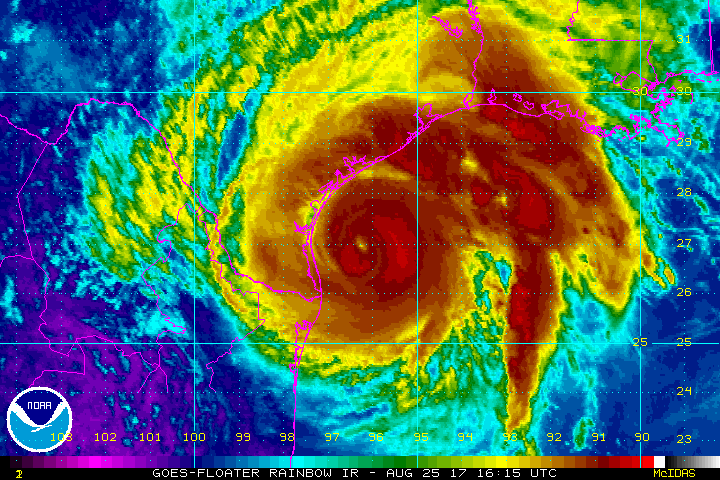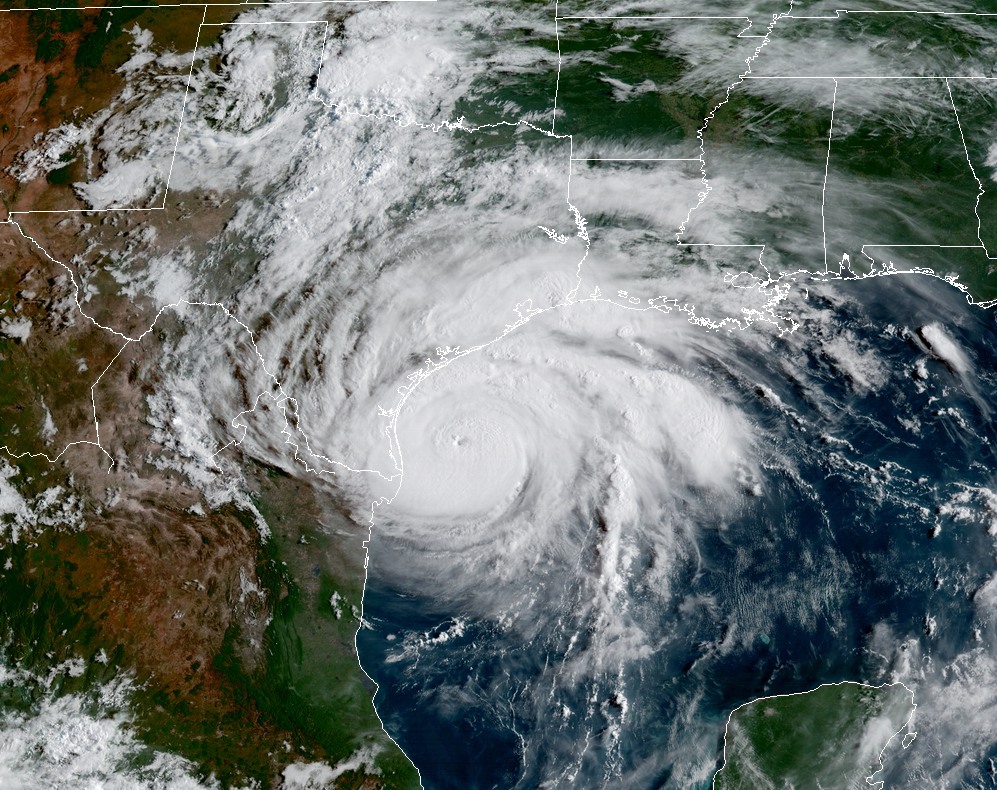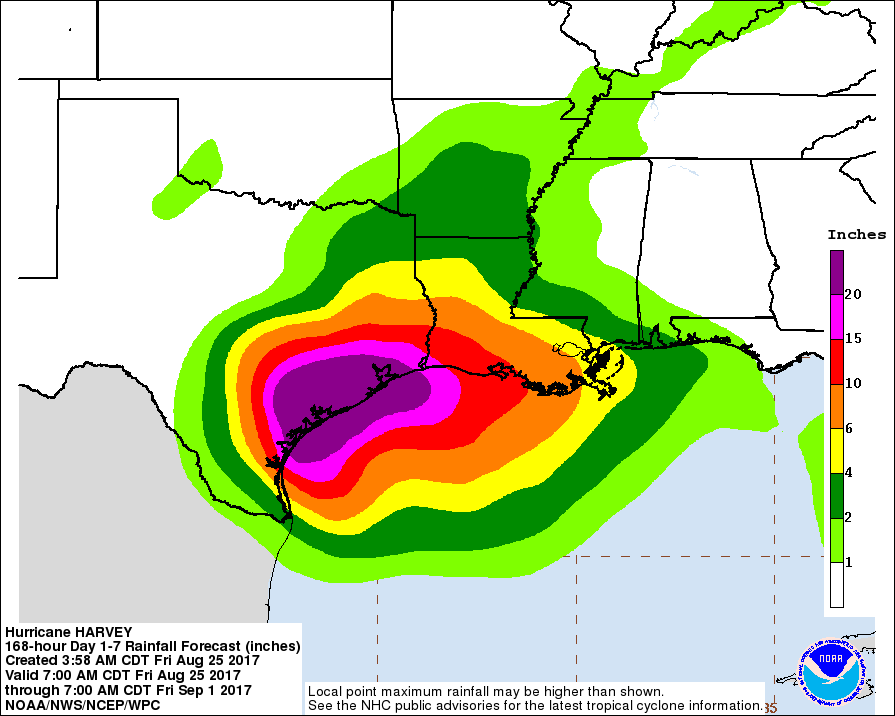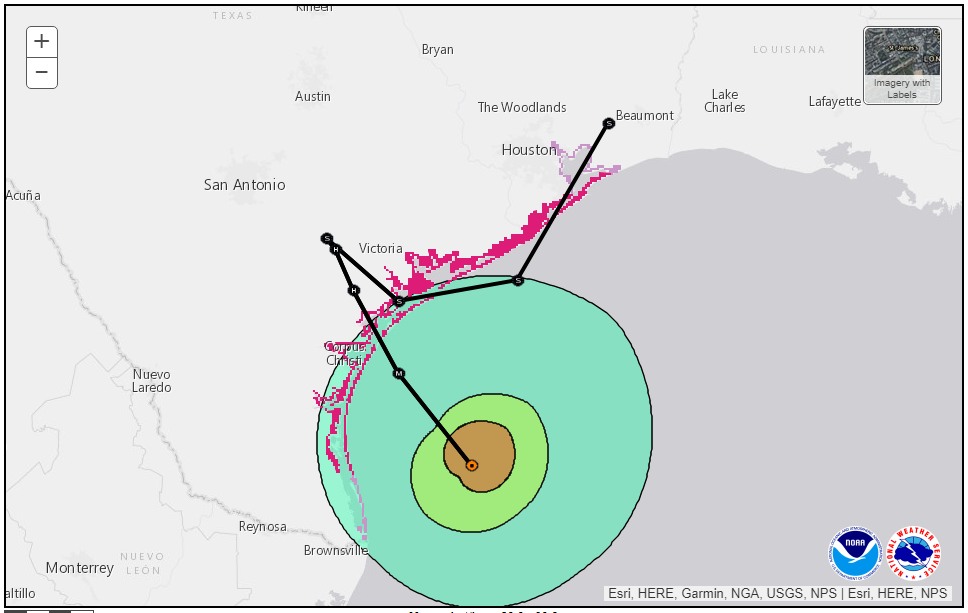As of 7:45 PM Friday, Hurricane Harvey has been officially upgraded by the National Hurricane Center to a category four storm with 130 mph maximum sustained winds. Port Aransas just gusted to 105 mph as the eyewall approaches. Should Harvey make landfall at its current intensity, it will be the strongest storm (by wind) to hit Texas since 1961’s Hurricane Carla (which came ashore just north of where Harvey should) and the strongest in the U.S. (by wind) since Charley hit Southwest Florida in 2004.

Coastal Texas from near Corpus Christi north to Matagorda are being absolutely pummeled by wind and squalls and they will continue to deal with this in the hours ahead. Few words needed to describe the situation there, and our thoughts are with folks that live in that region.
Here in the Houston area, things are also active. We’ve had numerous tornado warnings issued throughout the day today, mainly south of US-59 and I-10. As these squalls and feeder bands on the north side of Harvey come ashore, they are capable of producing brief tornadoes, mainly in the coastal counties. These are extremely difficult to warn on because they spin up so quickly, and the NWS Houston office has done an outstanding job thus far with them. If you are placed under a tornado warning tonight, do take it seriously and seek shelter at your location (lowest level of the building in an interior room). Have a way to receive warnings overnight. A tornado watch remains posted until at least 2 AM for the Houston area, along and south of US-59 to I-10.



